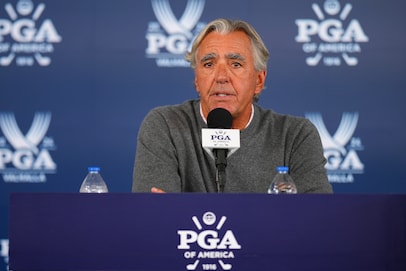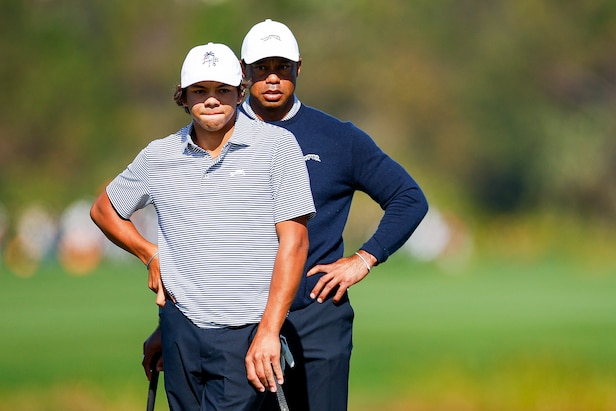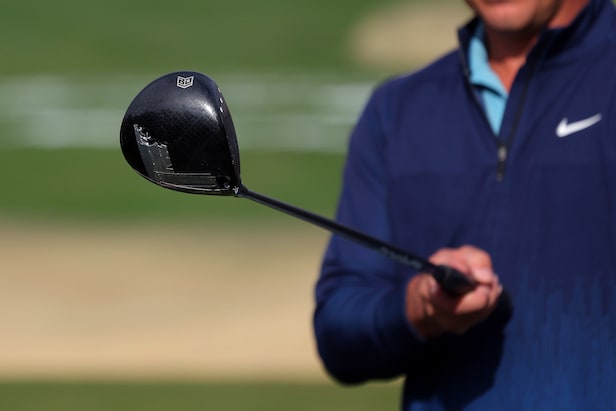PGA of America president says rollback could lead to run on golf balls set to become non-conforming – Australian Golf Digest

- by Admin
- May 15, 2024

PGA of America President John Lindert said the quiet part out loud when it comes to the golf ball rollback that the USGA and R&A have slated to take effect in 2028: Namely, that average golfers might not abide by it. At least initially.
Speaking beside CEO Seth Waugh and director of championships Kerry Haigh on Wednesday at the PGA Championship during the PGA of America’s pre-tournament press conference, Lindert laid out his prediction for what he believes will happen during the early stages of a new standard that could rollback golf ball performance at the elite level by 15 yards. Under the plan, the rollback standard would apply to all balls on the conforming list in 2028, although there would be a grace period where previously conforming balls would be grandfathered until 2030 but only for recreational, non-elite level play. That led Lindert to predict a run on the old golf balls in 2028.
“From my perspective, I have said this kind of half-heartedly and half-jokingly, but from my perspective, as somebody that owns a golf shop, I’m probably going to sell a boatload of golf balls in 2028, and my members are going to store them until 2036, and they’re going to continue to play them,” said Lindert, the director of golf at the Country Club of Lansing (Mich.). “I know my membership. I know what they will do.”
Lindert’s voice highlighted the potential, and as-yet-unaddressed, uncertainty surrounding the rollback. The USGA and R&A have been resolute in analyzing the role distance has continued to play in the elite men’s game and firm in announcing the rule change late last year. That announcement was especially noteworthy for adopting a universal rule rather than a bifurcated set of standards for elite and recreational golfers after hearing objections from several constituencies, including the PGA of America. Essentially the change in the robot conformance standards to a faster club head speed (from 120 to 125 miles per hour) would result in a 15-yard distance loss for the fastest swingspeeds.
More From Golf DIgest The More You Know For the last time, the PGA Championship is NOT run by the PGA Tour: An idiot’s guide to who runs what in golf  PGA Championship 2024 PGA of America CEO on the ‘messy’ state of pro golf: ‘It’s doing damage to the game’
PGA Championship 2024 PGA of America CEO on the ‘messy’ state of pro golf: ‘It’s doing damage to the game’  Analysis Golf Digest Logo With a shorter golf ball likely, the golf industry is worried about its long game
Analysis Golf Digest Logo With a shorter golf ball likely, the golf industry is worried about its long game
That decision, however, set in motion was a staggered implementation between 2028 and 2030. In addition to all new balls having to meet the new standard starting in 2028, elite events would be contested with a rolled back ball. Meanwhile, previously conforming balls would still be acceptable for recreational play through 2030.
That puts club pros in many cases the arbiters in deciding what balls will be OK at their courses between 2028 and 2030—and, based on Lindert’s comments, well beyond that date. It’s not a situation that Waugh wants the men and women in his association to have to resolve, but they may not have a choice.
“We were pretty public at the time and continue to be that we didn’t want to do anything that would disrupt the momentum we have in the recreational game,” Waugh said, indicating that he was happy that the test speed was reduced from 127 to 125 and that the implementation was delayed several years. “We totally understand what the USGA and R&A are trying to do, which is protect the game for the next 50 years, and respect that. We also don’t always have to totally agree on everything. We are very thankful that they went from bifurcation, which we thought would be a disaster. It would have created chaos, and our 30,000 members would have been on the frontline of trying to police that, which is, you know, a very tough position. You don’t want your head pro to be checking people’s balls on the first tee. It’s just not a very pleasant thing to have to do, right? We are thankful that they went to one rule for all, which we agree with.
“Are there still conversations going on within the industry? Yeah. It’s a hard issue. Nobody really knows if we are reaching human limits at this point or not, or whether we are reaching technology limits or not. But our perspective was anything that would make the game harder and less fun is probably not something we are for, while we are finally having the moment of growth that we have begged for forever.”
Lindert’s assertion, though, certainly raises the possibility that manufacturers are going to have to choose a strategy about how to break down their business once the rule changes. Will some or all of them continue to develop balls that adhere to the old standard, setting in motion a scenario where non-conforming golf balls become a standard product in pro shops? If major manufacturers decide to only make balls that conform to the new standard, will smaller manufacturers look to undercut them by making and selling the old-rule balls?
That scenario of non-conforming products selling equally with conforming products is anathema to the way the game has existed for much of its modern existence. The two-year grace period could just as likely fuel the instability as resolve it. And while Masters Chairman Fred Ridley was just as clear that his tournament would embrace the rolled back ball, the PGA Tour has yet to take a similar stand.
Of course, it’s also worth noting the USGA maintains that the effect on the recreational golfer’s driving distance will be minimal, perhaps only a few yards.
All of that global instability of the rollback rule means the court of local opinion could be the most heated. Of course, the judges of that jurisdiction are the PGA of America members Waugh is most concerned about. For his part, he remained hopeful that the rollback will not hurt the game more than it helps it.
“It’s far enough out where I’m not sure that we will know, and I do think that players will adapt,” he said. “The very best will figure out this new ball and figure out how to hit it farther than I certainly do. Again, I think our biggest fear is for that part of the game that is growing, are you going to sort of disrupt that, for one-half of one-half of 1 percent that are out there, right? We are glad that it’s one rule, and the game is going to be bigger than any of this. We can all argue about it, but the game is going to be fine, you know, both recreational and I think professionally, as well.”
MORE GOLF DIGEST PGA CHAMPIONSHIP COVERAGE
PGA Championship 101: Answering all your frequently asked questions
How to watch the 2024 PGA Championship
Power Rankings: Every player in the PGA field, ranked
The 13 best bets to win at Valhalla
Tee times for Round 1 and Round 2
Secrets to Scottie’s Success: Watching 1,353 shots during Scheffler’s impressive run
Tiger’s mysterious Valhalla bounce: Investigating one of golf’s biggest conspiracy theories
Can Rory McIlroy find himself again in the march toward joining golf’s all-time greats?
Micheal Block: ‘Year of Blockie’ and what happens when your 15 minutes of fame are up
‘The Hole At’: Valhalla’s 18th was built to always produce drama
An ode to Valhalla and the thing it’s always delivered
The 5 holes that will decide the PGA Championship
This article was originally published on golfdigest.com
The Latest News
-
December 23, 2024This quiet Canadian will make you love YouTube golf again – Australian Golf Digest
-
December 23, 2024Guide Helps Australian Workers Expose Tech Wrongdoings
-
December 23, 2024PPHG achieves GSTC multi-site certification for all its Australian properties – Travel And Tour World
-
December 23, 2024Championship three-peat reward for ‘clinical’ Aussies | cricket.com.au
-
December 23, 2024Australian tennis star Purcell takes on voluntary provisional suspension for breaking anti-doping rules





